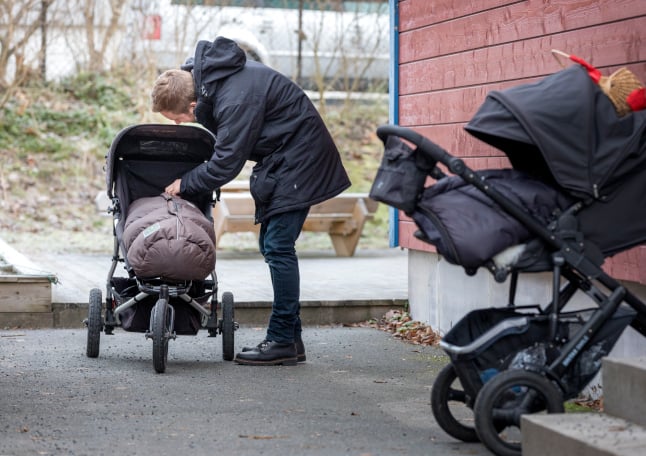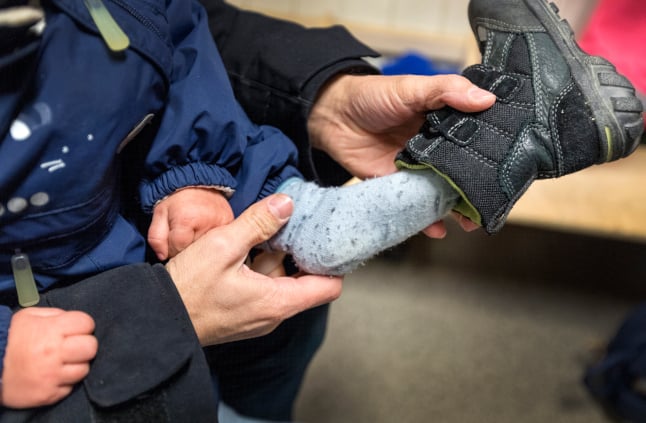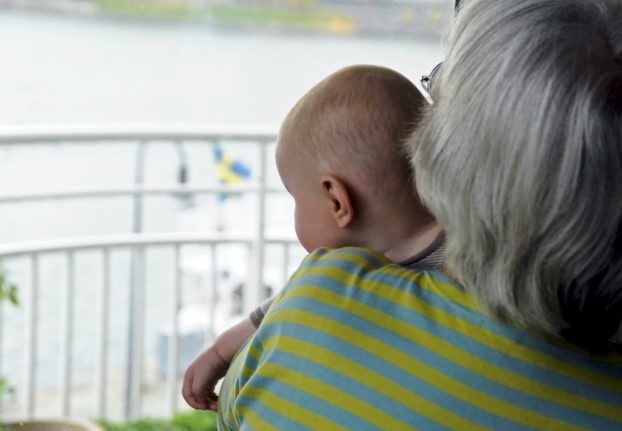What age do children start preschool?
Children in Sweden are allowed to attend preschool (förskola) from age one to age six – but it is entirely voluntary, unlike schooling after age six. However, most children do attend, and it can be a useful way of helping your child make new social connections – especially if your child has had limited contact with other children.
What kinds of preschool are there?
The most common type of preschool is förskola, where children aged one to six are looked after during the day by preschool teachers and childcare workers. Children are given breakfast, lunch, and snacks, and, depending on their age, they will also have a nap. You may also hear the terms dagis or even lekskola – these are just older terms for preschool which are the words many Swedes grew up with.
Outdoor preschools (uteförskola) have a focus on outdoor activities, where the majority of the day is spent outside, weather permitting.
Preschools can be public (kommunala) or private (fristående). Public and private preschools are subject to the same rules and laws about the quality of education they provide, and private preschools are not allowed to charge a higher fee.
A less formal option for younger children and children without a preschool place is open preschool (öppna förskolan), where children attend alongside their parents on a drop-in basis, and parents do not need to sign up in advance. Here, parents have responsibility for looking after their children, so they are more of a meeting place for families and children rather than a childcare offering. Children can attend open preschool from birth.
If your child has special needs, your preschool can usually provide support. However, you can also apply to a preschool specifically for children with special needs (förskola för barn med särskilda behov), which may be able to provide special equipment or resources.
Preschools are generally open weekdays between 06.15am to 6.30pm. If you work outside these hours, you can apply for your child to attend a special hours preschool (OB-förskola).
Finally, if your child does not already have a preschool place, they can attend general preschool (allmän förskola) for free, up to 15 hours a week if they are over the age of three. Children who already attend preschool pay a reduced fee from the autumn semester after they turn three years old.

When does my child attend preschool?
As a rule, your child is entitled to attend preschool during your work or study hours. If you are unemployed or on parental leave with another child, then you are also entitled to send your child to preschool – the amount of hours differs between municipalities. Preschools are closed on public holidays as well as two days a year for activity planning, where children will usually be at home or at another nearby preschool.
How does it work?
If you would like your child to attend preschool, you need to apply. In some municipalities (such as Malmö and Gothenburg) you have to apply to private preschools directly. For public preschools, you need to apply via your municipality’s website. In other municipalities (such as Stockholm) you can apply to private preschools via your municipality’s website. Make sure to check the rules for where you live.
The earliest time you can apply for a preschool place differs between municipalities. In Malmö and Stockholm you can apply to join the waiting list for a public preschool place as soon as your child is born. In Gothenburg the earliest you can apply is when your child reaches six months.
If you apply at least four months before you need a place, then you are guaranteed a preschool place starting between the dates you provide in your application. In your application you can list between one and five preschools – but there is no guarantee that your child will be given a place at one of these preschools, so it pays to apply early.
In most municipalities you need to have BankID or an equivalent e-identification tool to apply online. It is possible in certain situations to apply without this, but you will need to contact your municipality’s preschool office (förskoleförvaltningen) directly.
Your offer will be sent via email or post, and you usually need to accept within a week. There is no fee for applying to public preschools, and places are allocated via a queue system, with priority for siblings of children already attending the same preschool. If you are unhappy with your offer, you can reject it, but you are not always guaranteed another place and may have to reapply, which can take considerable time.

Preschool is not free in Sweden, but fees are income-based, with a maximum fee of 1,645 kronor ($153) per child per month (fees for 2023). There are also deductions for each child if you have multiple children attending preschool at the same time – in this case the maximum fee would be 1,097 kronor for the second child and 548 kronor for the third, with parents paying no fee for any further children. Children over three are entitled to 15 hours of free preschool education per week, so these are deducted from your fee once your child reaches this age.
To get an idea of how much you would have to pay based on your household’s income, you can use this calculator (in Swedish – similar calculators exist for other municipalities). These fees are adjusted yearly by the Swedish school authorities and are applicable to all municipalities. If your child has a preschool place, you have to pay even if you do not use it – over summer or during holidays, for example.
Note that native language education (modersmålsundervisning) is not offered at preschool stage in the same way as in school – your child will not be offered classes in their native language, but national guidelines state that children should be able to develop their native language alongside Swedish. The bigger cities usually have some private English-language or bilingual preschools, which you may have to apply to directly.
What happens when my child gets a place?
Once you have accepted your offer, you will usually receive further information directly from your preschool. This will include a form you will need to fill out about any medical information or allergies your child may have which the preschool staff need to be aware of, as well as information on any other languages spoken at home so they can best support your child.
You will also receive information on what your child needs to bring to preschool. This is mainly clothing – it is a good idea to write their name in everything so that nothing gets lost. Some preschools provide nappies (diapers) and some ask parents to provide their own – check with your preschool if you are unsure.
When the time comes for your child to start, you will attend preschool alongside them to help them settle in. This period is called inskolning and usually takes between one and two weeks, so you will need to take time off work or take out parental leave to cover it. This is also a good chance for you to get to know the other children in your child’s class, your child’s teachers, and some of the other parents.

Where can I find more information?
Most municipalities provide some information about preschools in English, and you should be able to contact them directly if you have any further questions. Preschool rules can differ between municipalities and between individual preschools so it is always a good idea to check what applies in your particular situation.



 Please whitelist us to continue reading.
Please whitelist us to continue reading.
Member comments